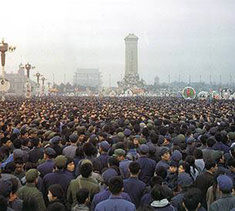
Biggest funerals in history
First published: Tuesday April 21st, 2020
Report this blog
Before we begin it is vital to note that it is incredibly difficult to pinpoint exact numbers of attendees for such large gatherings for a few reasons:
- It's impossible to accurately count that many people. Many estimates are actually based off counting people visible in photographs.
- Data are very unreliable. Various sources can have figures of attendance differing greatly, by as much as several million. For some funerals there are no clear figures at all.
- Figures are prone to exaggeration. In some cases crowd figures are overstated, either accidentally due to human error, or deliberately due to political propaganda or personal bias. For example a rally in Athens protesting the Macedonia name dispute claimed to have 1.5 million people in attendance, when Athens Police claim the figure was less than 200,000.
- Furthermore, some funerals lasted only one day and took place in one location, and in some other cases perhaps several funeral services were incorporated into one big series of services that took place across several cities, and official estimates may include attendees at all of these locations in one figure.
So just remember that these figures are a fairly crude guide, the list not completely comprehensive, and not necessarily in exact order. Thank you very much, now let's commence with the list.
Victor Hugo

Date: 1st June 1885
Location: Paris, France
Attendees: 2-3,000,000 people
Victor Marie Hugo was a French writer. Even in a nation rich in great and celebrated writers, Victor Hugo is considered one of the greatest. He was a prolific poet and playwright, and his many novels include his most famous works Les Misérables , and The Hunchback of Notre-Dame. Beyond his literary works, Victor Hugo was a very tenacious social activist, and held political offices wherein he spoke in favour of abolishing capital punishment, and of republicanism. He became a vehement critic of president Napoleon III, who clung to power by declaring himself emperor of the French. He went into exile in Belgium, then the Channel Islands, but returned to France after Napoleon III fell from power.
Victor Hugo returned to France a national hero. For the remainder of his life, despite suffering many personal tragedies, he remained a very active political figure, and a fierce patriot, once writing;
"Woe to anyone who harms France! I do declare I will die a fanatic patriot"
And so he did in 1885. Despite his own request to have a pauper's funeral, he was granted a grand state funeral. His body lay in state in a huge catafalque beneath the Arc de Triomphe.

From there he was taken over 4 miles to his final resting place, Le Panthéon. Joining the funeral procession were 2-3 million of his admirers. He was, and remains, a national treasure of France. Many streets and town squares are named after him, and he has been depicted on postage stamps and French banknotes.
Princess Diana

Date: 6th September 1997
Location: London, United Kingdom
Attendees: 1-3,000,000 people
The world was shocked by the news that Princess Diana, or Lady Di, had been killed in a tragic car crash in Paris. For days following her death there was an outpouring of grief around the world, and at her funeral procession an enormous crowd gathered to mourn her, reaching anywhere between 1 and 3 million people.
Princess Diana was not a princess by birth, nor was she at the time of her death. She had been a princess for 15 years through her marriage to Prince Charles Windsor, and in that time, she was catapulted from relative obscurity to becoming the most famous woman in the world. Even today she is still one of the most publicised figures in the world's media.
Diana initially captivated public attention, as many royals generally do, as a glamour icon. But eventually she developed a persona that went well beyond this, as she attempted to paint herself as real person behind the glossy magazine cover, and one who cared about the less fortunate.
She was a patron of many charities, and personally spearheaded several significant causes and issues
such as campaigning to globally ban landmines, and changing peoples' perception of HIV/AIDS, leprosy, and homelessness.
No royal had hitherto deigned to take such an active role in helping the needy to such a degree. Thus, through these efforts she changed the face of the British monarchy. She made the royal family suddenly appear grossly out of touch with their own people, whereas she was seen as an unprecedentedly relatable and genuinely caring person, garnering respect even from some non-royalists.
Ayrton Senna

Date: 4th May 1994
Location: São Paulo, Brazil
Attendees: 3-4,000,000 people
Ayrton Senna was a Formula 1 racer, generally considered to have been one of, if not the most skilled driver in motor racing history. He won the World Championship 3 times, and the Grand Prix 41 times. He was also famed for his skills in racing in wet conditions, and well liked for generally being a good sportsman.
Senna became a national hero of his native Brazil, and thusly it was considered a national tragedy when he died in an horrific accident during the San Marino Grand Prix at Imola, Italy. Senna crashed into a retaining wall at 145 mph, dying shortly after from serious injuries.
His body was flown to his home city of São Paulo, where he was given a state funeral, attended by 3-4 million of his admirers. Brazilian fighter jets flew overhead in a diamond formation.
Ayrton Senna was admired around the world for his skills as a driver, but he was particularly adored by fellow Brazilians as a great personal inspiration. After his death he would also come to be admired by racing fans and non-fans alike for his philanthropic work, having given great sums of money to organisations to help disadvantaged children and young people.
Evita

Date: 9th August 1952
Location: Buenos Aires, Argentina
Attendees: 3-4,000,000 people
Eva Perón was a major political figure in the history of Argentina, and her dramatic life has been famously captured in the musical 'Evita', a name she also went by.
She was born during a time when Argentina was beset with political and civil turbulence. She grew up in poverty, and furthermore carried the stigma of being illegitimate. She could scarce have been dealt a worse hand. Nonetheless in her short lifetime she rose up to become a hugely successful political and social figure.
As a youngster she was determined to become a famous movie star. She had some success in film and radio, but her career path would change suddenly when she met Juan Perón, a dashing army general. They married, and combined their efforts to create a powerful political force.
Evita was a great orator, and used her skills in addressing crowds to rally public support for Juan Perón. Together Juan and Evita created a movement, Peronism, that championed the beleaguered working class and defied the corrupt and disconnected ruling elites. With Evita as its glamorous and charismatic mouthpiece, Peronism became hugely popular.
When Juan Perón eventually became president, Evita became First Lady. But over time she became even more than that, developing her persona as a semi-divine spiritual figure as she kissed lepers, and funded homes for the homeless.
Evita's radical yet charming public image substantially changed Argentina's politics by engaging and galvanising the poor and disaffected, in a manner similar to Princess Diana, though many decades earlier.
She became even more popular than her husband, and concerns were raised by his government she might someday seek to become president herself. However, any hopes she may have had would not come to pass, as she fell seriously ill from cervical cancer, before succumbing in 1952.
Her funeral was attended by approximately 3 million people.

Umm Kulthum

Date: 5th April 1975
Location: Cairo, Egypt
Attendees: ~4,000,000 people
Umm Kulthum was an enormously popular Egyptian singer. Like the other examples in this list, she is considered a national icon, and is known by many nicknames including "The Voice of Egypt", and "The Fourth Pyramid. She was also given the honorific title The Eastern Star.
Selling over 80 million records she is still one of the best selling musicians in the Arab world, and her songs are still played by radio stations across the Middle-East. Her music was seen as a positive constant throughout turbulent times in Egypt. In fact her song Walla Zaman Ya Selahy (It's been a long time), performed during the Suez Crisis, was briefly made into the national anthem of the United Arab Republic (a temporary union between Egypt and Syria).
When she died of kidney failure in 1975, the Islamic funeral rites that are normally administered immediately were postponed by two whole days, to accommodate her mourners, approximately 4 million of them.
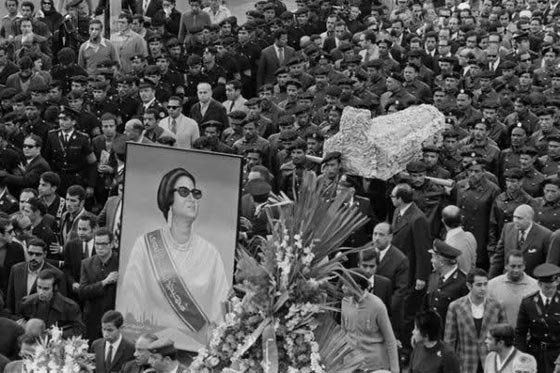
This might not only mean that her funeral was potentially the largest funeral of any woman in history, but also possibly the largest funeral of any person who was not a religious or political figure.
Pope John Paull II

Date: 8th April 2005
Location: Vatican City/Rome, Italy
Attendees: 4-5,000,000 people
Pope John Paul II was the second longest serving pope (reigning 27 years) and the first non-Italian pope since 1523. As he was both such a significant spiritual and political leader, unsurprisingly his funeral was enormous. It had been dubbed 'The largest Christian gathering in history'. It was certainly one of the largest gatherings of national heads of state and government to date, attended by: four kings, five queens, at least 70 presidents and prime ministers, and more than 14 leaders of other religions. Furthermore an estimated 4.5 million mourners gathered around the Vatican City, with up to 250,000 inside the Vatican itself.

Kim Jong-Il

Date: 28th December 2011
Location: Pyongyang, North Korea
Attendees: ~5,000,000 people
In 1994 Kim Il-Sung, ruler of North Korea, died suddenly. Soon after came footage of endless crowds of people weeping and howling with grief at the loss of their beloved president (2 million people in all). In 2011 similar scenes were broadcast once again when North Koreans took to the streets to mourn the loss of Kim Il-Sung's son and successor, Kim Jong-Il.
Though most of the world shed no tears from hearing of the dictator's death, Kim Jong-Il's funeral procession was supposedly lined by over 5 million mourners, a fifth of North Korea's entire population. Why did so many grieve so loudly at the loss of the brutal dictator?
Those who weren't genuinely grieving, having been indoctrinated since birth to adore Kim Jong-Il as an almost godlike figure, were likely putting on a performance if only to avoid harsh punishment for not grieving enough.
Kim Jong-Il's body was brought to Kumsusan Palace, which acts as the mausoleum of both he and his father Kim Il-Sung.

The mausoleum is now a pilgrimage site for North Koreans. A visit is compulsory for anyone who vacations in the country.
Japanese analysists have proposed that the embalming materials necessary to preserve the bodies of the Kims, which North Korea imports, might be used as bargaining chips to pressurize the regime to improve its human rights policies.
Ayatollah Khomeini
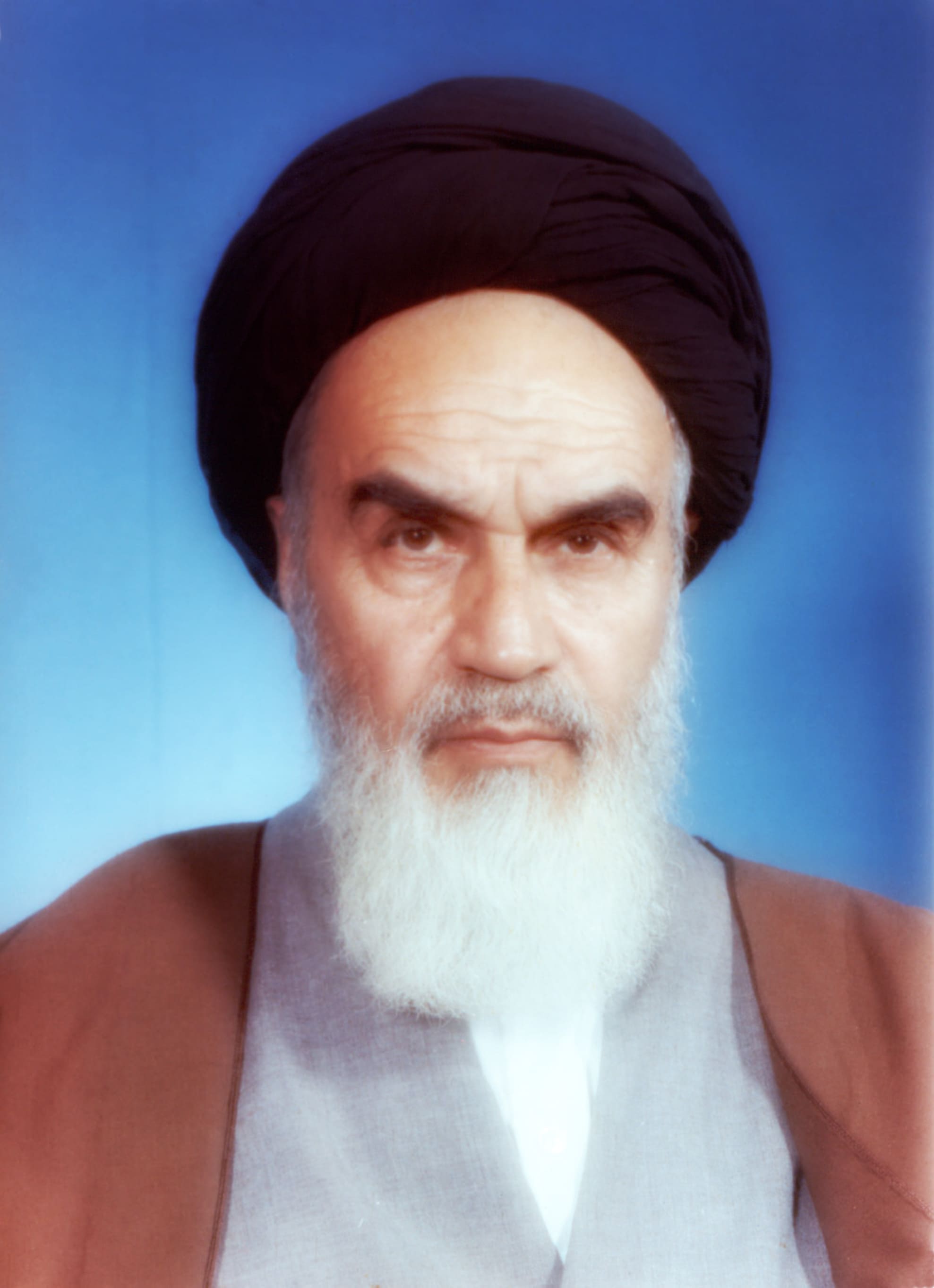
Date: 5th June 1989
Location: Tehran, Iran
Attendees: 2-10,000,000 people
Ruhollah Khomeini was an Islamic scholar, poet and spiritual leader, who became Supreme Leader of Iran following the Islamic Revolution. He was an outspoken proponent of Sharia law and theocratic political rule.
He had stoked a widespread fanatical following. For this reason his funeral was huge, and it is also for this reason the figures of his funeral attendance are particularly unreliable.
When Khomeini died in 1989, millions gathered to publicly mourn him. Outside estimates believe it is almost certain that at least 2 million people attended, but official Iranian estimates claim as many as 10 million people attended. Whatever the number, Khomeini's funeral would certainly be a spectacle.
His most zealous followers scrambled to get close to his body as it was brought down by helicopter and driven on the back of a truck through the crowds.
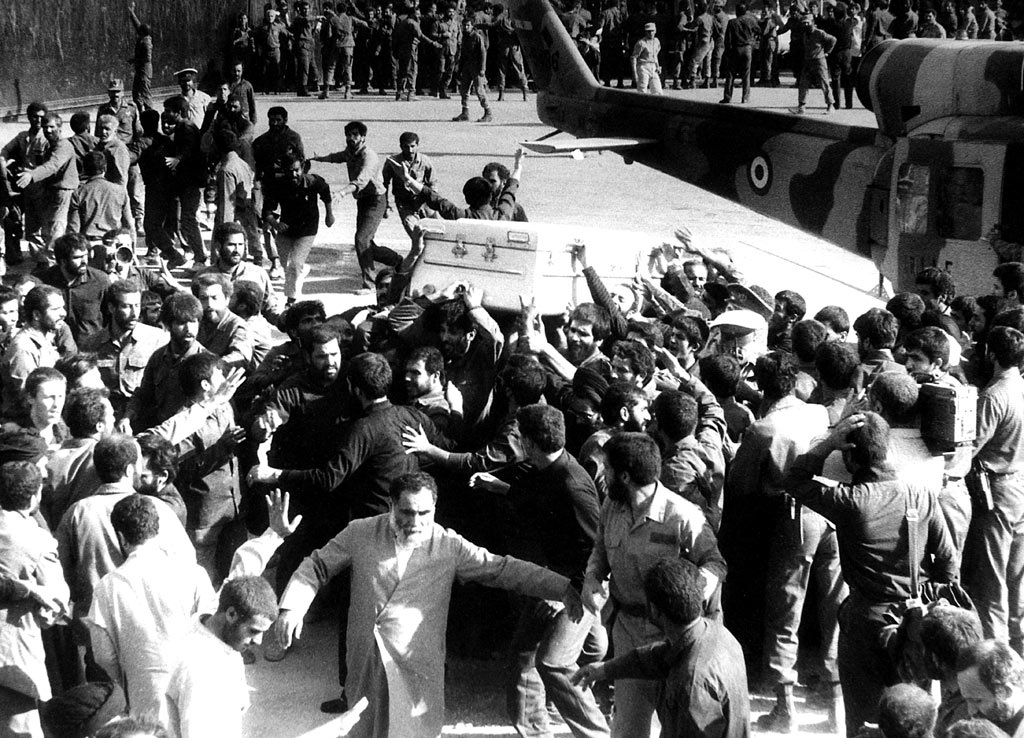
In the scuffle his body was actually pulled from its coffin and his shroud was pulled off, here is a clip of the incident. His body was hastily retrieved and put back in the helicopter, which then tried to take off, but for a while was unable as dozens clung to it.
Khomeini had to have another funeral with tighter security measures the next day.
Abraham Lincoln

Date: 18th April - 4th May 1865
Location: Washington D.C. - Springfield, United States
Attendees: ~7,000,000 people
Abraham Lincoln will forever remain one of the most respected and admired of all American presidents. He was a great statesman, who ended the American Civil War and the dark chapter of slavery. So when he was assassinated, by John Wilkes Booth in 1865, millions of Americans poured out to pay their respects at his funeral procession, which was called "The Greatest Funeral in the History of the United States".
A period of national mourning lasted three weeks. Tens of thousands of people (including a young Theodore Roosevelt) came to the funeral ceremony in Washington D.C., then Lincoln's body was taken from Washington to be interred in his hometown of Springfield, Illinois.

After several days of mourning in Washington D.C., Lincoln was transported to Springfield in a funeral train pulled by 'The Old Nashville'.
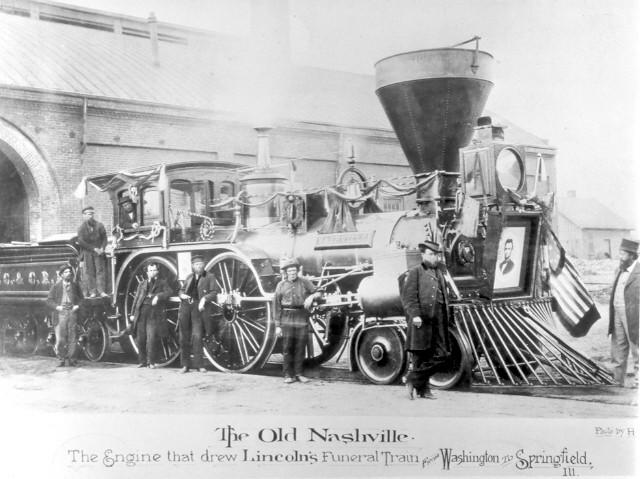
The funeral train passed through 6 states, following in reverse the route Lincoln himself took to Washington D.C. for his presidential inauguration, and never went more than 20mph.
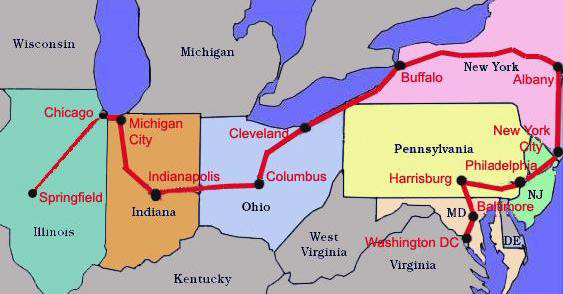
As the train made its way to Springfield, it is believed as many as 7 million people came to pay their respects as Lincoln's body was carried through their communities.
Lincoln eventually arrived in Springfield, but his tomb was still under construction. For many years his body was moved around several times, as his tomb was built and rebuilt, and also as thieves attempted and nearly succeeded to steal the body in a plot led by the Chicago crime lord James "Big Jim" Kennally.
In all Lincoln's body was moved 17 times before being permanently laid to rest in 1901.
Gamal Abdel Nasser

Date: 1st October 1970
Location: Cairo, Egypt
Attendees: 5-7,000,000 people
Gamal Abdel Nasser was an Egyptian politician. He played a huge role in the Egyptian revolution which overthrew the monarchy and established a republic, and shortly afterwards he became president of Egypt.
Nasser formed his own political ideology, 'Nasserism', which chiefly encompassed socialism, self-determination and anti-imperialism. As such he nationalised Egyptian sectors that were controlled or influenced by foreign powers, including the Suez Canal, a catalyst for the ensuing Suez Crisis in which Egypt fought Israel, France and the United Kingdom for control of the canal. Egypt ultimately succeeded, which caused Nasser to become an instant hero to Egypt and the Arab world.
Nasser was also a major proponent of Pan-Arabism (the unity of Arab people across national borders), and of the Non-Aligned Movement. For a short while he was leader of the United Arab Republic, a union of Egypt and Syria.
His popularity suffered setbacks, as Egypt lost the 6 Days War to Israel, and the United Arab Republic collapsed. Nasser was also criticised for being authoritarian and violating the human rights of his people.
Nonetheless he remained very popular until his death in 1970. His funeral in Cairo was attended by between 5 and 7 million people.

Nasser remains a controversial figure, but by and large he is still regarded as an icon of Egypt, and a hero of the Arab world.
Tito
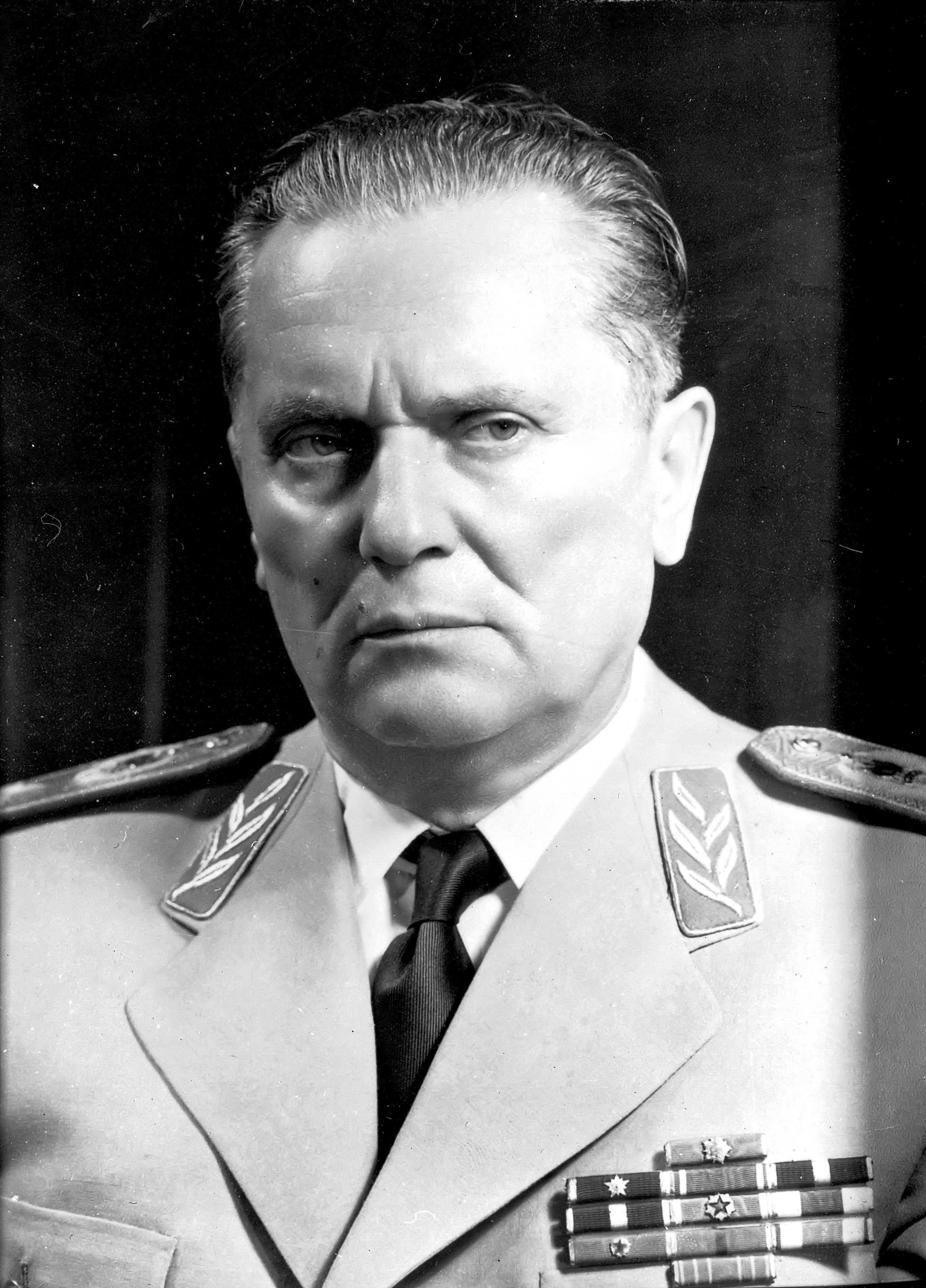
Date: 8th May 1980
Location: Belgrade, Yugoslavia
Attendees: 4-8,000,000 people
Josip Broz was better known by his nickname Tito. He was the leader of Yugoslavia from the end of World War 2 until his death. Much like Nasser, Tito is a controversial figure as he has been described as a dictator who lived a life of luxury at the expense of his people, and who persecuted thousands of political opponents. Also like Nasser, Tito was a major patron and founder of the Non-Aligned Movement, which was a pact that many countries formed to abstain from allying themselves with either the USA or the USSR during the Cold War. Tito was its first secretary general.
Tito himself was nominally communist, but his huge role in forming and championing the Non-Aligned Movement meant he made friends with countries on all sides of the Cold War, and met with dozens of other world leaders from Soviet premiers, American presidents, kings and queens, communist leaders, and even some anti-communist leaders. He was popular with all kinds of world leaders.
Among the few that he did not form friendships with were the staunchly anti-communist Augusto Pinochet of Chile, and the ultra-communist leader of neighbouring Albania, Enver Hoxha, with whom Tito was at odds.
Tito died in Ljubljana in 1980 of gangrene, triggering scenes of mass grief across Yugoslavia. His coffin was transported to the capital Belgrade on his Plavi voz (Blue Train). Huge crowds gathered all along the route from Ljubljana to Belgrade, lining the train tracks and attending the funeral ceremonies at various stops on the way. However, the train supposedly carried and empty coffin, as Tito's body was so gangrenous it was actually transported to Belgrade by helicopter.

The main funeral ceremony in Belgrade attracted huge throngs of people. Planes flew in formation making the word 'TITO' appear in the sky. The entire funeral procession, including the main funeral and train journey, may have attracted as many as 8 million people. But Tito's funeral was most outstanding for the number of statesmen that attended.
In attendance were four kings, 31 presidents, six princes, 22 prime ministers, and 47 foreign ministers, as well as representatives from other several global organisations and political parties around the world.
A funeral with such a huge array of statesmen has been rivalled only by a few other examples such as the funeral of Nelson Mandela, and has only since been surpassed by the funeral of Pope John Paul II. But what makes Tito's funeral especially significant is that the statesmen who attended his funeral were from both sides of the iron curtain, and of vastly different political ideologies including; Margaret Thatcher, Indira Gandhi, Leonid Brezhnev, Kim Il-Sung, Nicolae Ceausescu, Robert Mugabe, Ziaur Rahman, Saddam Hussein and many more.
Notably absent were the American and Cuban presidents Jimmy Carter and Fidel Castro, though those countries still sent delegates.

Tito was popular with his own people as a hero of WW2 and Nazi fighter, as well as for his role in making Yugoslavia more prominent on the global stage. He was also popular with other world leaders for his non-partisanship during the Cold War. But as large as his funeral may have been, it, and those of all others listed pale in comparison to the largest of all time.
C. N. Annadurai

Date: 4th February 1969
Location: Chennai, India
Attendees: 15,000,000 people
Conjeevaram Natarajan Annadurai, also known as C.N. Annadurai, or simply 'Anna', was an Indian actor and politician. He was born in the state of Madras, a Tamil speaking region on the southern tip of India.
Annadurai had many careers; he was a schoolteacher, journalist, linguist, actor and playwright. He was a tremendous orator and writer in the Tamil language. Many of the plays he created were turned into movies.
He then became very involved in politics. He was closely allied with the social activist Periyar E. V. Ramasamy, founder of the Self-Respect Movement, and was strongly devoted to Dravidian ideologies, which espouse secularism and challenging the Indian caste system. He had also supported the idea of an independent Tamil state.
Annadurai was elected Chief Minister of Madras State. He changed the name of the state to Tamil Nadu, and he also legalised 'self-respect marriages' which encouraged marriages based on love between people regardless of caste.
Less than two years after becoming Chief Minister, Annadurai fell ill with cancer. He continued to be active in politics for several months, until he passed away in 1969. He is widely considered a great statesman for the Tamil people, who strove hard and succeeded in representing Tamil interests in India, and for symbolising the honour of the Tamil nation. Thus his funeral attracted a huge crowd.
C.N. Annadurai's funeral was enormous, supposedly attracting over 15 million people. This not only unquestionably would make his the largest funeral in history, but also one of the largest peaceful gatherings of people of all time.
So there we have it, some of the most distinguished if not largest funerals in world history.
Some other large funerals:
- Mao Zedong, dictator of China: Several million
- Josef Stalin, Soviet dictator: 3-4 million
- Mahatma Gandhi, 2-3 million
- Jawaharlal Nehru, first prime minister of India and key founder of the Non-Aligned Movement: 2-3 million
- Hugo Chavez, president of Venezuela: 1-3 million
- Ziaur Rahman, president of Bangladesh: 2 million
- Vladimir Lenin, founder of the Soviet Union: 1 million
- Engelbert Dollfuss, Austrian statesman who abolished the Nazi Party: 1 million
A sad fact: in several cases many people were killed by the huge frantic crowds gathered at these funerals. At Josef Stalin's funeral several dozen were crushed to death.
Who do you think might join this list in the future?

I staunchly agree that just because you're popular that doesn't automatically mean you are a good person. But to some degree 'good' is a subjective term. The bottom line is that anyone who cares about fair-mindedness should read up more about historic figures before they form an opinion. Clearly you've done that and I thank you for contributing more facts to this post.
To me the crux of this post is much less about the people listed, and much more about highlighting the need for objectivity when looking at data that is highly prone to bias, in more ways than one. It was also a great exercise in learning how to put pictures in a blog post!
that child of two years ago wouldn't even imagine what would happen next...